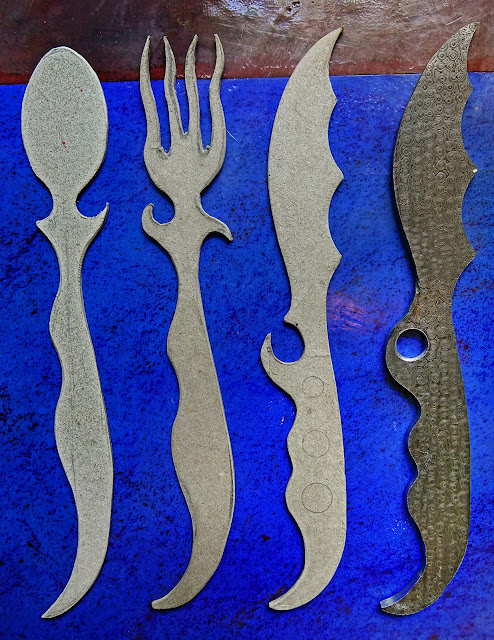I made the mistake to drill the holes before cutting the small fork out of billet, and it ended up imperfect, so I decided to use it to figure out whether I wanted to keep the pieces pretty flat with square edges the full thickness of the billet, or whether they would look better if they were slightly rounded with rounded edges.
Also, there is the issue of the shape of the forks. For a reason I have not yet figured out, most forks have a double curve:
Also, there is the issue of the shape of the forks. For a reason I have not yet figured out, most forks have a double curve:
I would actually like my Damask Silverware to have all the handles laying flat on the table and curving the same way. So I heated the head of the fork red and simply curved the teeth up, leaving out the other opposite counter curve. It is perfectly functional.
I sanded the fork until the handle had a nice smooth curve, and the teeth were rounded on the bottom side.
Just two 15mn dips in the etchant produced the same beautiful matte grey finish, which I actually may prefer to the traditional Damask finish.
The question is: how it would hold up? Maintenance may require a periodic 15 mn rejuvanating dip in the Ferric Chloride. Something to think about...
Another thing is that Damask Steel rusts, and should be kept oiled between uses. How is that going to change the finish? Easy enough to find out. I rubbed some olive oil on and wiped it dry. There is surprisingly NO CHANGE to the matte finish.




































